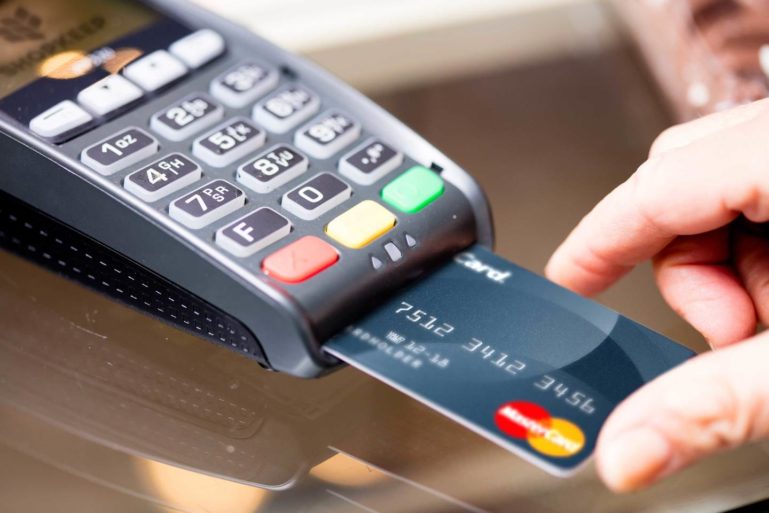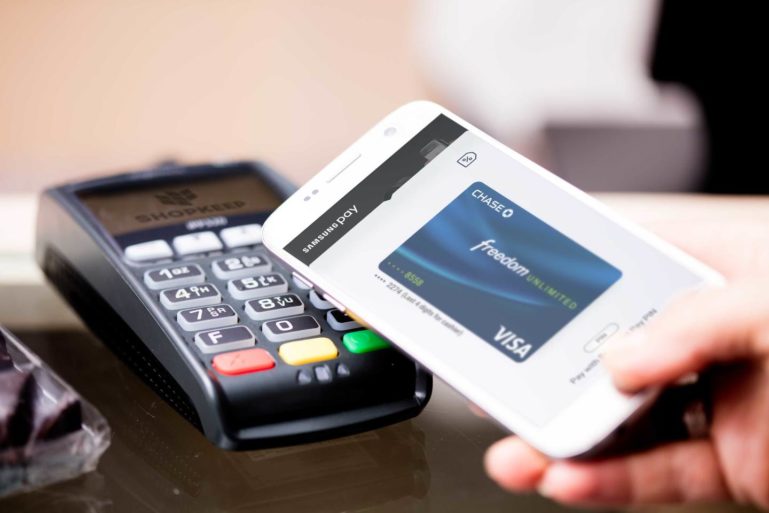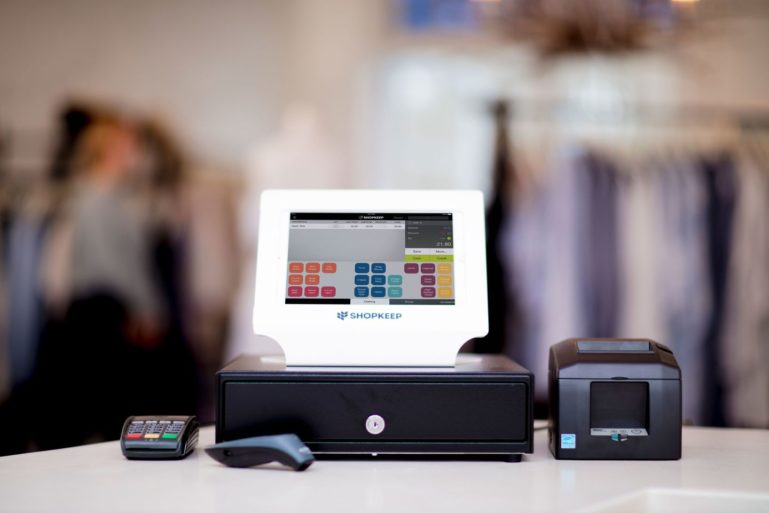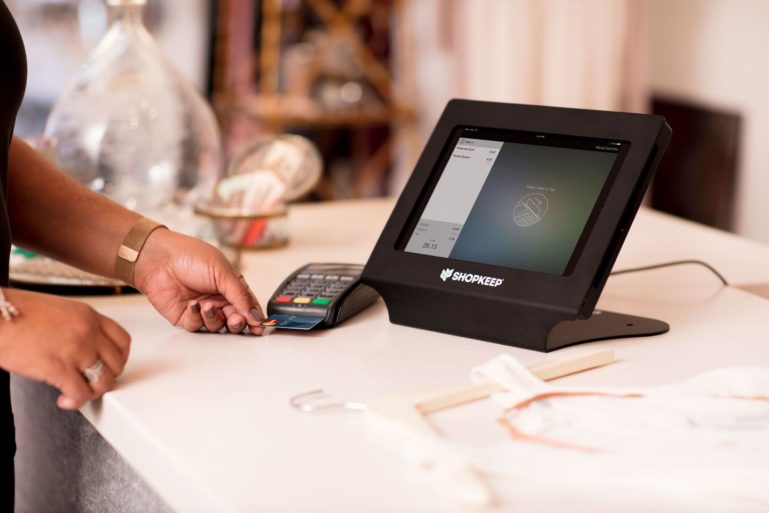
Get the Best Rate: How to Compare Credit Card Processing Fees
In today’s small business landscape, accepting credit cards as a form of payment is pretty much standard practice.
Don’t get us wrong, you can still find pockets of cash-only businesses, but cash usage is becoming less common in our digital society. Think it’s all hype? Here are a few things to consider:
- 78 percent of consumers pay with credit or debit cards
- Numerous psychology studies find significant differences in spending based on how shoppers pay for things (spoiler alert — customers spend more when paying with plastic)
- According to the latest Global Cash Index ™ report, cash usage fell from representing 40 percent of transactions in 2012 to 32 percent in 2015
Since you can’t beat them, you might as well get used to the idea that electronic payment processing is your new best friend. Learn how to compare credit card processing fees to ensure you get the best possible rate.
What is the Average Cost of Credit Card Processing?
Let’s get a common myth out of the way first. In the complicated world of payments and credit card processing, there is no ‘average.’ While a merchant services provider may offer you a quote or an average you can expect to pay, consider this an arbitrary number and take it with a grain of salt. This number can help provide guidance and group your business into a general bucket, but the actual cost of your credit card processing fees will fluctuate based on the card types your customers use for payment and how they pay — something you have little control over.
Types of Credit Card Transactions
We’ll take a closer look at card types and how that plays into pricing shortly, but for the sake of flow, we first need to exam how customers pay. Here are the different methods for businesses to accept payment cards:
Take a Swipe
The long-standing official standard for U.S. payment processing until recent years, the classic swipe transaction. A swipe transaction is a classification of payment in which the customer is present at the time of the transaction and the payment card is physically swiped through a merchant’s POS system at the point of purchase. Payment card data is encoded in the magstripe on the back of the card and read by the POS terminal at the point of sale.
Take a Dip
Europay, Mastercard, and Visa — or EMV for short — is the global standard for processing chip-card transactions. Like a swipe transaction, with an EMV transaction, the customer is present at the time of the transaction. However, rather than swiping the card at the point of purchase, the customer inserts the chip into the point of sale terminal.
The big difference between a swipe transaction and a chip transaction is how the data is stored on the card and how the payment terminal captures it. The magstripe on the back of a credit card contains static or unchanging sensitive data such as the Personal Account Number (PAN). Because the data does not change, if it falls into malicious hands it can easily be replicated to make fraudulent purchases.
The chip found on EMV credit cards is a tiny computer chip that creates a unique one-time use transaction code for every single transaction. It communicates that code with the POS terminal and there is a digital handshake that occurs between the card and the terminal to verify the information and therefore making it almost impossible to replicate the data.
In October 2015, the U.S finally caught up with this global standard with the EMV Liability Shift.

Take a Tap
The emergence of NFC (Near Field Communication) technology in smartphones gave way to a new way to pay by credit card. One where you don’t even have to touch your physical card or even the POS terminal. You simply open your phone’s digital wallet, select the card you want to use, hold the phone near the terminal, and verify the transaction by fingerprint (Apple Pay, Samsung Pay). Like the previous two transaction types, NFC transactions are also classified as the customer being present at the time of purchase.
Take a CNP (Card-Not-Present)
Card-not-present transactions refer to payments that are made in which the cardholder does not or cannot physically present the card to the merchant. Whether the card is magstripe only or a chip card is a moot point because the card data is keyed-in to the POS terminal.
Small businesses may accept CNP transactions as a way to take deposits over the phone for a large purchase or service, in which case, the merchant manually keys-in card data into the point of sale system. Another popular method is mail-order transactions. Although less popular with retailers these days it’s still an option for paper billing collections such as insurance claims. You write your card number and expiration date on the billing stub and mail back the payment. Collectively, mail-order/telephone order transactions are known as MOTO transactions.
Today, the most common type of card-not-present transactions are ecommerce transactions.
SEE ALSO: Credit Card Processing Fees: What You Need to Know
Roll Call: The Fab Five
Before we go any further, let’s conduct a quick roll call and identify the key players in a credit card transaction.
Card Networks
The card networks are exactly who you think they are — the big four — Visa, Mastercard, Discover, and American Express.
Issuing Bank
In some cases, the card networks work with financial institutions (banks) to issue credit or debit cards to consumers on their behalf. For example, let’s say your customer just paid for products using a Chase card with the Visa logo. Chase is the card issuer, or issuing bank providing the card to the cardholder on behalf of Visa. Because the bank is the financial backer of the card, they also assume the most risk should the cardholder default on their payments.
Acquiring Bank
An acquiring bank, also known as the ‘processor’ or ‘processing bank,’ are the ones that communicate the bank card data with the issuing banks during a transaction.
Payment Gateway
A payment gateway is a third-party software payment solution that acts as the middleman between the merchant and the acquiring bank or processor. Unless you have the funds and know all the security protocols to stay PCI compliant and integrate to a payment processor directly, this is not a middleman you can afford to cut out.
Online credit card processing for ecommerce purchases always leverage a payment gateway to process transactions securely. For in-store payments and mobile payment processing,
a gateway makes payment solutions like ShopKeep’s iPad cash register PCI compliant. Therefore, all the smart and savvy business owners using ShopKeep are PCI compliant as well because the gateway is baked right into the solution.
Merchant Service Provider (MSP)
A merchant service provider is an entity that has a direct relationship with an acquiring bank (or can be an acquiring bank themselves) and facilitates merchants to accept credit cards and debit cards by providing merchant accounts.

Card Types and Interchange Rates
Like we previously mentioned, when it comes to credit card processing fees, a lot of it has to do with the various forms of plastic your customers use. The reason for this is because each card network (Visa, Mastercard, American Express, and Discover) have their own interchange fees, or interchange reimbursement fees they charge between acquiring banks and issuing banks for using their network.
For instance, the same Chase-issued Visa credit card that’s issued to an individual may carry an interchange fee of 1.19 percent and $0.05 per transaction. That same card when issued to a company (business credit cards for corporate purchasing) may have a higher interchange fee of 1.85 percent and $0.07 per transaction.
And in 2010 thanks to the Durbin Amendment that was part of the Dodd-Frank law permitted the Federal Reserve to put a cap on interchange fees charged to merchants for debit card transactions. So if the same Chase Visa was issued as a debit card prior to this policy, retailers would pay up to $0.44 per debit transaction — now it tops out at $0.12.
While Visa and Mastercard are open networks and make their fees available to the public, American Express and Discover are considered closed loop networks — meaning they issue cards to the cardholder directly. Since they don’t have to answer to any other financial institutions like Visa and Mastercard do with their issuing banks, they keep their rates under wraps and typically charge higher fees.
Payment Processing Pricing Structure
Now that you have a solid background in credit card processing and the key payments players, let’s get to the good stuff and talk about pricing. When it comes to credit card processing companies, not all service providers are created equal. Partly because of the merchant services they provide, but also how they price their services.
During your search for the best credit card processor, there are two standard pricing structures you’ll come across during your vetting process.
Tiered Pricing
Tiered pricing, also known as bundle pricing, was the most common type of fee structure offered by payment processing companies and merchant service providers. It’s popular among providers because it put the most money in their pocket; which means it takes the most money out of the pockets of merchants like you.
With this model, MSPs can bundle interchange fees into general rate tiers of their choice and may look something like this in order of lowest to highest rate:
- Qualified
- Mid-qualified
- Non-qualified
Since MSPs can define their own arbitrary rules for rate tiers, they can really split hairs and make it almost impossible to know what you’re paying. For instance, they can decide a rewards credit card is a mid-qualified transaction while a cash back card is a non-qualified transaction. So for every customer that comes through your doors and uses a card with a cash back feature, you’ll pay the highest possible rate under this model.
Interchange Plus Pricing
Interchange plus, also known as pass-through is a much more transparent pricing model and one that actually works in favor of small business owners. Traditionally, this pricing model was only available to merchants with a high processing volume. However, as the payment industry evolves and becomes much more competitive, this model is more widely available to small businesses. It’s also the model ShopKeep Payments use for merchants that choose us as their payment provider.
It’s known as pass-through because the merchant services provider pass along their wholesale interchange rates from the card networks. The wholesale rates are detailed on your monthly merchant statement as separate line items, so you know exactly what you’re paying.
Providers that follow this model determine a straightforward interchange markup fee plus a per transaction fee. The interchange markup fee is a flat fee you pay regardless of the wholesale processing rate.
SEE ALSO: High-Risk Credit Card Processing — Know Where You Stand
Other Common Credit Card Processing Fees
In addition to interchange fees and interchange markup, there are also some other fees you’ll incur for processing services.
Monthly Fees
Monthly fees for credit card processing can range from statement fees, terminal and POS fees, to PCI compliance fees. Make sure the processors can explain all of these fees to you, so you know what to expect.
Annual Fees
Rather than paying monthly fees for the items mentioned above, credit card companies may choose to charge them on an annual basis instead. Additionally, they may give you the option to pay monthly, or annually for a discount.
Cancellation Fees
If you enter into a contract with a merchant service provider, make sure you have a clear understanding of any early cancellation fees. Should you decide to terminate the contract before it comes to term, you want to make sure it’s not going to break the bank.
Incidental Fees
Incidental fees are just that — something that is charged only if an incident occurs. Chargebacks, therefore related chargeback fees and retrieval fees are the most common incidental fees merchants will see on their statements.

Can You Charge A Convenience Fee for Credit Cards?
Now that we’ve talked about what credit and debit cards will cost you to process, we bet you’re wondering if there’s a way to offset some of that cost. For some of you, it’s your lucky day, because there is. For the rest of you, we’re sorry to say that other than processing fees being an eligible tax deduction for small businesses, it’s illegal to charge a convenience fee or surcharge fee on credit and debit card transactions. Let us explain further.
Currently, for those small businesses that operate in the following states, it is illegal for businesses to charge customers a surcharge when paying with credit or debit:
- California
- Colorado
- Connecticut
- Florida
- Kansas
- Maine
- Massachusetts
- New York
- Oklahoma
- Texas
For those of you not operating a business in those states, it’s legal for you to charge up to the amount of your discount rate, but it cannot exceed 4 percent as per Visa and Mastercard.
If you’re business is located in one of these non-surcharge states, it’s not all bad news. Merchants are taking their case all the way to the Supreme Court and it seems like it’s only a matter of time before they win the right to surcharge in these states.
The Bottom Line
While accepting credit card payments seems like a simple matter, there is a lot more going on behind the scenes that you may not expect. Not only the technical aspects of processing payments, but how the fees are assessed. Now that you have a solid understanding of how to compare credit card processing fees, don’t settle for anything less than the most competitive and lowest rate for your business.
Want to try ShopKeep for yourself?
Just answer a few easy questions.
Need help finding the right point of sale?
Just complete the form. We’ll call you right back to explain how ShopKeep can work for you.
Hit the ground running.Sprinting, in fact!
Read our free, comprehensive guide, Small Business 101, to learn all you need to know about starting a thriving business.

